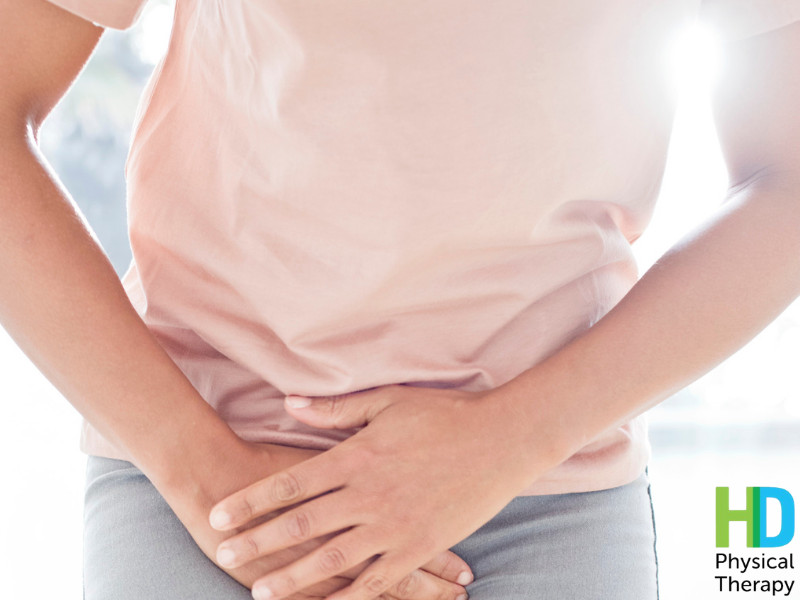
If you are dealing with pain in the lowest part of your abdomen and pelvis, you are likely dealing with pelvic pain. While you may have participated in physical therapy for an injury or surgery, did you know that physical therapy can help with your pelvic pain? At H&D Physical Therapy, we offer pelvic health physical therapy to individuals of all ages and genders dealing with dysfunction or discomfort stemming from the pelvic floor. To learn more about pelvic pain and how physical therapy can benefit you, continue reading below.
What Is Pelvic Pain?
Pelvic pain is a broad term that might refer to symptoms arising from the urinary, reproductive, digestive systems, or musculoskeletal issues. Some of the symptoms of pelvic pain or dysfunction include:
- Frequent urination.
- Incontinence.
- The urgency to urinate.
- Pain during intercourse.
- Constipation.
- Pregnancy/post-pregnancy pain.
- Pain in the hip, abdomen, pelvis, thighs, or lower back.
While various conditions and diseases can lead to pelvic pain, these symptoms are often the result of an imbalance in muscle tone and strength of the pelvic floor. Pelvic pain can arise in both men and women from the digestive, urinary, or reproductive systems or can result from irritation of nerves in the pelvis. Possible causes of pelvic pain include:
- Endometriosis.
- Menstrual cramps.
- Appendicitis.
- Fibromyalgia.
- Kidney stones.
- Urinary tract infection (UTI).
- Irritable bowel syndrome (IBS).
- Pelvic floor muscle spasms.
How Can H&D Physical Therapy Help?
Pelvic floor physical therapy can be a first-line treatment for many disorders of the pelvic region. Men and women with weakness in their pelvic floor muscles can perform targeted exercises to enhance bladder and bowel control and strengthen the pelvic floor. Upon your first session, our team will evaluate your medical history and assess the function of your internal and external muscles. The evaluation will help us determine the best course of action to best suit your needs. Some of the different treatment modalities involved in pelvic floor physical therapy include:
- Abdominal massage.
- Myofascial release for the muscles and surrounding structures of the pelvic floor.
- Biofeedback for strengthening or relaxation of the pelvic floor.
- Soft tissue mobilization.
- Exercises for muscle coordination.
- Biofeedback or electrical stimulation.
Contact Us Today!
At H&D Physical Therapy, our team of specialists is well-versed in the internal and external management of the viscera and pelvic floor. If you are dealing with pain or dysfunction of the pelvic floor, consider scheduling a physical therapy session with us today!
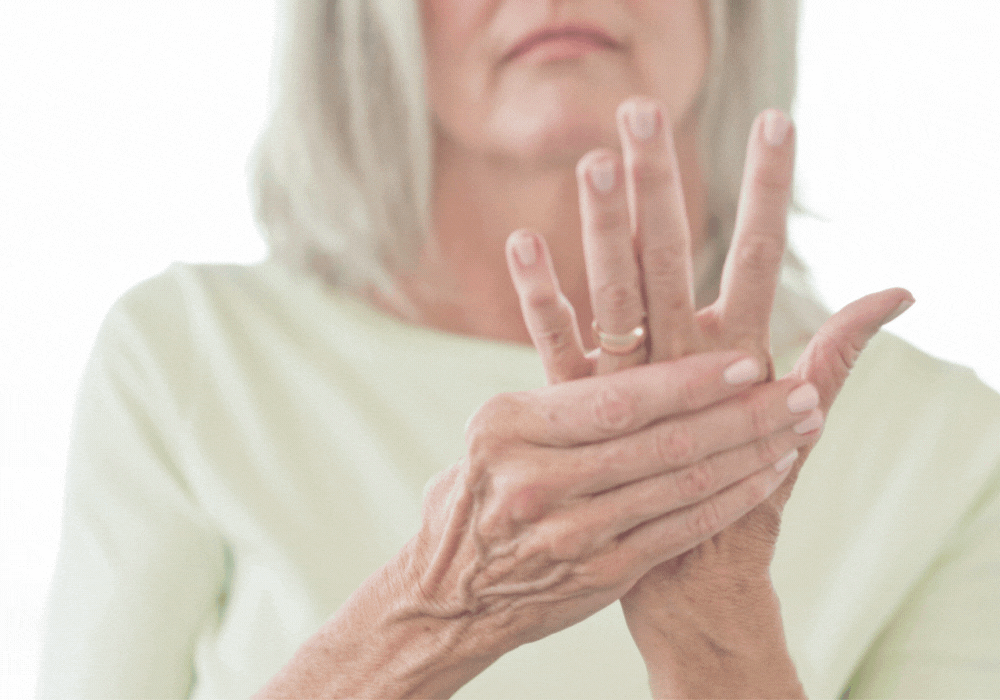
Does it seem like carrying things used to be easier, or that your handshake grip used to be firmer? If you answered yes, you are likely dealing with hand weakness. Because we rely on our hands to perform nearly all of our everyday tasks, you must seek treatment for this issue right away. Luckily, here at H&D Physical Therapy, hand therapy in New York City, we provide hand therapy to individuals at any age that are experiencing limitations in the use of their hands. If you’re wondering if you’re dealing with clumsiness or something more severe like hand weakness, continue reading to learn more.
What Are The Signs of Hand Weakness?
If you often drop things or find that items often slip out of your hands, you might think of yourself as clumsy. While clumsiness is usually a minor issue in healthy individuals, it could indicate a more significant issue. The hands are highly complex, and while they allow us to do several things, they can be prone to problems. You may be dealing with hand weakness if you display any of the following symptoms:
- Numbness.
- Weak grip.
- You are unable to carry otherwise manageable items.
- Hand pain.
- Clumsiness using your hands.
- Fatigue.
Hand weakness can be caused by several different conditions, such as arthritis, carpal tunnel syndrome, peripheral neuropathy, or ganglion cysts. Excessive repetitive use of your hands can also lead to reduced function and weakness. Fortunately, hand therapy here H&D Physical Therapy can help you address your problems and implement a treatment plan to get you back to optimal function!
Treating Hand Weakness
Problems with your hands can be frustrating to deal with since they are so necessary for daily functioning. At H&D Physical Therapy, hand therapy in New York City, we offer hand therapy to help patients improve the strength of their hands. We understand that each patient and diagnosis are different, so we will evaluate your needs and develop the most effective treatment plan. Treatments will vary depending on the individual, but hand therapy can include:
- Custom splinting.
- Manual therapy.
- Wound management.
- Paraffin bath.
- Neuromuscular reeducation.
Contact Us Today: Hand Therapy in New York City!
At H&D Physical Therapy, we treat people, not body parts. Our team will work with you and take the time to get to know you and your situation to provide you with the well-rounded treatment you deserve. To learn more or to schedule an appointment, be sure to contact our team today!
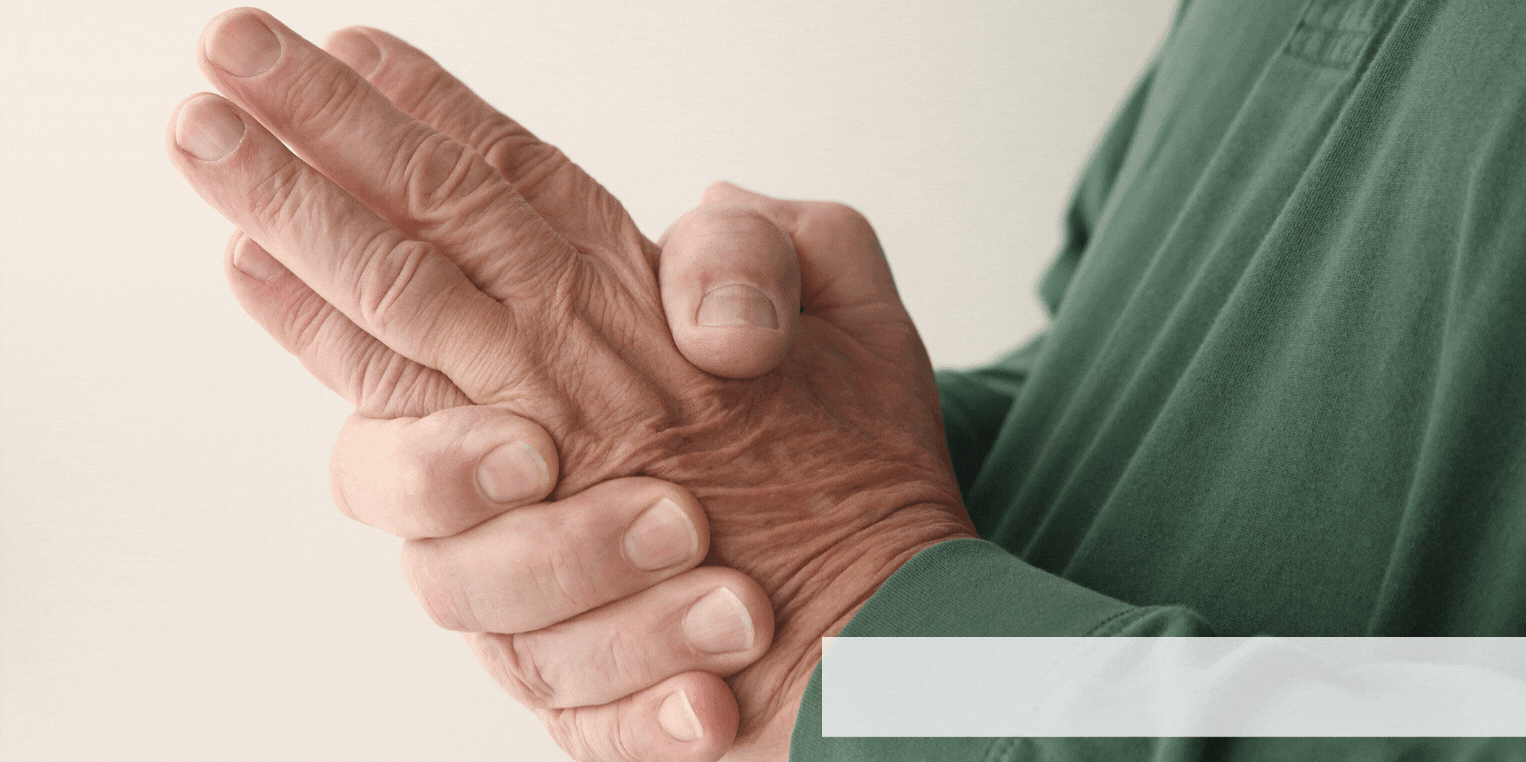

The COVID-19 pandemic has turned our world upside down over the past year. New York State has been hit extremely hard with the highest number of COVID-19 patients in the country. If you have tested positive for COVID-19, you might still be struggling with its after-effects. At H&D Physical Therapy, we provide Post-Acute COVID-19 physical therapy and have recently opened a new COVID-19 Rehabilitation Recovery Clinic with the Pulmonary Wellness Foundation. If you’re still dealing with the effects of the virus, let our team help you!
Post COVID-19 Recovery
Our team understands that every patient has had a different experience with the virus. Most people that contract COVID-19 will experience flu-like respiratory symptoms for about two weeks. However, some patients, known as long-haulers, recover from the acute virus but still experience symptoms months after infection. For many long-haulers, COVID-19 has left them plagued by painful symptoms, including shortness of breath, brain fog, heart palpitations, and trouble sleeping. Our team provides physical therapy to treat long-haulers dealing with the lasting effects of the virus.
If you are interested in trying physical therapy to manage your post-COVID-19 symptoms, our team will evaluate your needs and implement a treatment plan that works for you! One of our physical therapists will perform your initial evaluation, and a team of highly trained clinicians will perform follow-up treatments to ensure you yield the best possible results. Some of the treatments can include, but are not limited to:
- Breathing exercises to improve and restore diaphragmatic function and restore autonomic nervous system function.
- Manual therapy techniques such as soft tissue stretching and mobilization to address muscle tension caused by inactivity or overuse with impaired breathing.
- Cardiopulmonary physical therapy to help improve cardiovascular health and lung health.
- Exercise to increase endurance.
If post COVID symptoms have left you reeling, you would likely benefit from these treatments! Our new rehabilitation clinic is here to support the thousands of recovered COVID-19 patients in the tri-state area on their journey to health.
Contact Us
At H&D Physical Therapy, our top priority is patient safety, and our mission is to treat people with one-on-one integrated science-based holistic therapy. Our partnership with the Pulmonary Wellness Foundation allows us to further help each patient on their COVID recovery journey. To learn more about how physical therapy and pulmonary rehabilitation can help you, contact our team today!
Dizziness, imbalance, and falls are a significant problem for older adults and one of the most common reasons for hospitalizations or visits to the doctor. Here are some statistics:
- Every 20 minutes, an older adult dies from a fall
- 1 in 4 older adults report falls with 24% of those requiring medical treatment
- Less than half of older adults who fall talk to their physician about it with men being less likely to report falls than women
Despite these harrowing statistics, falling is thankfully not just a symptom of getting older. Dizziness, imbalance, and falls are not considered to be a normal part of aging, and in fact, usually indicate there may be problems affecting the balance systems. Your balance relies on three senses: vision (eyes), proprioception (sensors in the feet and legs), and the vestibular system (inner ear). The brain interprets this information and sends messages to your eyes, feet, and other parts of your body to maintain balance and focus. Dizziness, imbalance, and falls may signal these systems are not working correctly.
Falls may be directly linked to malfunctioning of one or more of these balance systems. Risk factors for falls include vestibular disorders, home hazards, vision impairment, foot/ankle disorders, vitamin D deficiency, certain medications, and orthostatic hypotension (a type of low blood pressure which occurs after standing up from sitting or lying down). Fall prevention strategies are usually aimed at addressing one or more of these risk factors.
Exercise is an extremely useful tool to help prevent falls, however, not all exercise is considered the same. An exercise routine should focus on training strength, endurance, flexibility, and balance in order to reap the full benefits of exercise relating to fall risk reduction. Tai Chi, originally conceived as a martial art, is another exercise which has been shown to reduce falls and fall risk. It combines breathing exercises, deliberate movements, controlled weight shifting, and meditation.
It is recommended to see a physical therapist if you feel like you are having problems with balance. A physical therapist will perform a comprehensive assessment of your balance and risk for experiencing a fall while providing balance training and prescribe exercises specifically tailored to your deficits. A vestibular physical therapist specializes in evaluating and treating patients with balance and dizziness disorders and may provide additional resources.
Imbalance, falling, and dizziness are not considered a regular part of getting older and usually indicate there may be problems with your balance systems. It is recommended to take action if you are experiencing these symptoms: talk to your doctor or physical therapist and exercise! H&D Physical Therapy provides physical therapy, vestibular rehabilitation, and wellness services aimed at improving balance and reducing risk for falls.
References
Bradley, S. M. (2011). Falls in older adults. Mount Sinai Journal of Medicine, 78, 590-595.
Falls are a major threat for your patients (fact sheet). STEADI. Centers for Disease Control and Prevention. https://www.cdc.gov/steadi/pdf/STEADI-FactSheet-MajorThreat-508.pdf
Horak, F. Role of the vestibular system in postural control. Vestibular Rehabilitation. Herdman, S. 3rd Edition. F.A. Davis Company, 2007, Philadelphia: 32-53.
Take steps to prevent older adult falls (fact sheet). STEADI. Centers for Disease Control and Prevention. https://www.cdc.gov/steadi/pdf/STEADI_ClinicianFactSheet-a.pdfMeditation: You have probably read or heard that modern science continues to confirm the substantial benefits of meditation.
Harvard has confirmed what has been taught for thousands of years:
-
Meditation reduces stress
-
Fosters clear thinking
-
Increases our capacity for empathy and compassion
On a physical level, meditation:
-
Lowers high blood pressure
-
Lowers the levels of blood lactate, reducing anxiety attacks
-
Decreases tension-related pain, such as, tension headaches, ulcers, insomnia, muscle and joint problems
-
Increases serotonin production that improves mood and behavior
-
Improves the immune system
-
Increases the energy level, as you gain an inner source of energy
With regular practice of meditation:
-
Anxiety decreases
-
Emotional stability improves
-
Creativity increases
-
Happiness increases
-
Intuition develops
-
Clarity and peace of mind is gained
-
Problems become smaller
Meditation sharpens the mind by increasing focus and expands through relaxation.
-
A sharp mind without expansion causes tension, anger and frustration
-
An expanded consciousness without sharpness can lead to lack of action/progress
-
The balance of a sharp mind and an expanded consciousness brings perfection
You can try this simple technique to begin enjoying the benefits of meditation yourself:
-
Find a comfortable position with your back easy and straight.
-
Support your back with pillows if you need to.
-
Your hands should rest easily.
-
Place a comfortable smile on your face and breathe in filling your belly first for 4 seconds, hold your breath 5 seconds and exhale for 6 seconds.
-
Start with anywhere from 5 to 10 to 15 minutes, choose an amount of time that you will do, just get started!
Other meditation options:
-
https://www.healthline.com/health/mental-health/types-of-meditation
-
https://www.healthline.com/health/mental-health/top-meditation-iphone-android-apps#headspace
Meditation Vexations and Advice
-
Monkey Mind? It is completely natural for your mind to wiggle and wander, (meditation/focus is a skill like any exercise. Your mind will likely try to fill the silence/recovery you are creating). It will probably bounce around, – like a monkey. Don’t be upset or discouraged, just notice and let it go, without urgency or judgement, return to your orienting activity.
-
Start with an easily “doable” time, 10 mins? Any amount of time is better than none!!
-
If you don’t feel anything profound, if you feel you didn’t do well, it’s still good! Suspend judgement!
-
Environment: It is easiest to be in a quiet space as you introduce yourself to practicing meditation
-
Food: Generally we are encouraged to do this when your stomach is not full
-
Power of 1+, meditating with another person or a group, however small increases the ambient feeling of peace, sometimes by and exponential amount
-
One writer said his practice was to do this in the morning: Drink a cup of coffee, meditate for 20 minutes. During that time the system is still able to relax, then physiologically, the caffeine kicks in and you are ready to go.
-
Keep your spine upright and neutral
-
Put a small smile only your face as the Buddha did. Physiological research backs this up, -endorphins!
You are doing something VERY positive for yourself!
Take notice of any positive, “salubrious” effects, mood, relaxation, mental alertness, creative ideas, or just rest and relaxation. With the investment of time and practice you will very likely begin to notice subtle changes in your response to stressful situations. This response will be amplified the more you practice and you will begin to notice the benefits listed above.
May the smile you practice become a smile of your relaxed and responsive body and soul.
*H&D offers Tai Chi classes which is “moving meditation”
There is a famous literary quote ascribed above the gates of Dante’s Inferno that reads as follows, “Abandon all hope, ye who enter here.” For those suffering under the imprisonment of chronic disability, whether it be of physical, mental, emotional, or social constraint, the burden of an unfulfilled life can feel at times to be just short of a living Hell. And all people, whether rich or poor, or famous or forgotten, will at some time in the marathon of life come across insurmountable hurdles that trip, bruise, and injure with a sense of ambivalent disconnect that seems as if the world itself is cruel and merciless. But the sun shines equally on the good and the bad alike, and not everyone hates a rainy day… so to some degree our imprisonment is partly due to our perspective. Right?
I have always admired the emotional stability of cats. Living in suburbia I frequently come across the curious happenings of the neighborhood alley cats. They are typically tough by nature, as can be expected, typical to the stereotype. They harbor all sorts of scars and scratches from earlier battles but still limp up to the stoop for a quick warm meal, bearing absolutely no trace of self pity for their maladies whatsoever. In fact, for those who own cats (or more appropriately – share a house with them) the lack of any observable distress or pain response in these animals can be an emotionally challenging experience for their owners. Cats will famously hop around on a broken leg and still fight for their right to lie on the spot they want to lie.
But cats are cats, and people are people. And cats are also mysteriously strange creatures…

For those inclined to the musings of philosophy and metaphysics to find “questions to their answers… to their questions,” there has always been a debate on suffering and the value of life. Is suffering inherent to growth in life, or does it detract from experiencing life more fully? There’s also the classically ambiguous question of self worth, ascribing value to what I can do for others versus who I am inside for me. An obvious cycle of never ending questions and answers can no more guide us toward our escape from disability, than distract us from the finality of the predicament we’re living.
Is life a forced predicament? Does a fish not swim in circles in a bowl without ever showing signs of withdrawal, or depression, or boredom? Please, I will not attempt to insult you with a reasonable comparison from a fish to a human being! But… how do you “reasonably” search for hope within a sealed room?
Houdini was made famous for escaping from the inside of a hermetically sealed metal vault. He was also known as a child to sleep very little and stare at space incessantly thinking. The point is that the escape was done, and can be done, realistically and without magic or delusion. Houdini was known for proudly debunking mystics and charlatans, claiming his tricks were simply the extreme end ranges of human ingenuity and incessant training. The key attribute here being “incessant,” that is never giving up and going on continually. Just imagine how long he would practice inside those vaults, running his fingers along the cracks and seams of the door, feeling the intricacies of the spindle-lock-mechanism, struggling to get some movement from it… some freedom from just a crack. Even his celebrated live escape could take up to an hour to finally experience!

Of course, very little is spoken of the locks Houdini could not pick, or of the one time he broke into a swearing rant from frustration and simply walked away.
Most everyone would agree that frustration, itself, is perhaps one of the worst, most disabling imprisonments of all, simply because we impose it on ourselves. There is nothing worse than scratching along the impenetrable surface of a brick wall that we put up in front of us. Even worse is the one sided brick wall, with no boundaries or corners to trap us in a corner. Sometimes we need to step back, evaluate ourselves and simply look at the big picture to find a solution. I personally have found in most, if not all cases, I need to reach out to someone “outside my head,” who can walk me around the wall from his or her unique perspective. The ultimate path to freedom was so natural and simple, but I could not see it standing from my solitary angle.
In the end, all types of people deal with their suffering in diverse and different ways. I just hope for your sake that it is not alone. And although it may sound cliche, remember that tomorrow is another day! And that where there is the sun and there is life, there is always hope!

The goal of attaining a “solid six pack,” “toned abdominals,” or “strong core” is incessantly peddled through the mass marketing engine of society’s fitness ideals. Billboards, TV commercials, online promotional products, and novelty gyms have all standardized the image of the perfect midsection, located just below the chest and at (or slightly above) the waistline of a glamorized human body. Even worse, the pseudo-medical term “core” is applied so casually to most every mainstream strengthening program that most people who believe they’re “working it” don’t even know what, in fact, they are actually working. Patients frequently ask me, “Where, or what, exactly is my core?”

The simple answer found on the bottom of a workout poster in the gym would read, “the muscles comprising the abdominal and lumbar regions, including the rectus and transverse abdominus, obliques, quadratus lumborum, paraspinals, etc, etc…” First of all, the phrase “strengthening the stomach” is, anatomically, a total misnomer. Our actual stomach is located just below the heart at the lowest border of the ribcage – thus the term “heartburn” for acid reflux is appropriately derived. What people actually mean by strengthening their “stomach” would more correctly apply to the region holding together the “sack” of roughly 25 feet of intertwined intestines and bowels, resting above the pelvic basin.
Relaxing the definition of “core” as beyond a distinct anatomical boundary, it is much easier to begin to understand a “center of structure,” or “framework of strength” when looking outside the typical exercise-type scenario. Take for example the explosive, tightly coiled posture of a rattlesnake ready to strike death in the fraction of a second…

Who could doubt the existence of the snake’s strength? Impossible! But where is the existence of its core? Certainly it is in there somewhere. Perhaps it’s in the abdomen (wherever that is), or maybe it’s in the alignment of its extra-elongated spine. Could the “true” core be in the abstract projection the animal’s body assumes and not in the physical bones at all?

Is shape alone evidence of structure? I won’t even tease upward levels of “core” abstraction with something like a jellyfish’s swirl! At least sticking with one species that we are most familiar with makes things a bit simpler. Take the woman pictured below in the ever famous, and always celebrated core-exercise pose… “the plank.”

A quick, yet obvious, examination of her poise will reveal she possesses at least adequate, if not excellent, core strength. The alignment of her shoulder joint is solid to the trunk of her body; the angles formed by her elbow and knees in relation to the ground are sharp and not sagging; even her eyes and face radiate a level of determination and “inner strength” that extend “deeper” than her six-pack sack of abdominal muscle two feet below. The “core” here is witnessed being far more than stomach anatomy, more than muscle itself — it is a frame of mind!
So what, where, how (or even when?) is the mysterious “core” actually defined?
Ironically, the purest, Latin definition of core as “that of the heart” lies closest to the truth. In Chinese medicine, the heart has two natures, physical and energetic. Aside from commanding the 5-6 liters of blood through every vessel of the body, it also shares an energetic relationship with the psyche, or the emotions of the soul. It is actually the center point or “core” of our character, the focus of our internal vision.
In the end, it is the “goal,” the “prize,” the “process” that we set ourselves upon, whether training in the gym or in life, that ultimately becomes our heart’s purest reveal… our truest core.
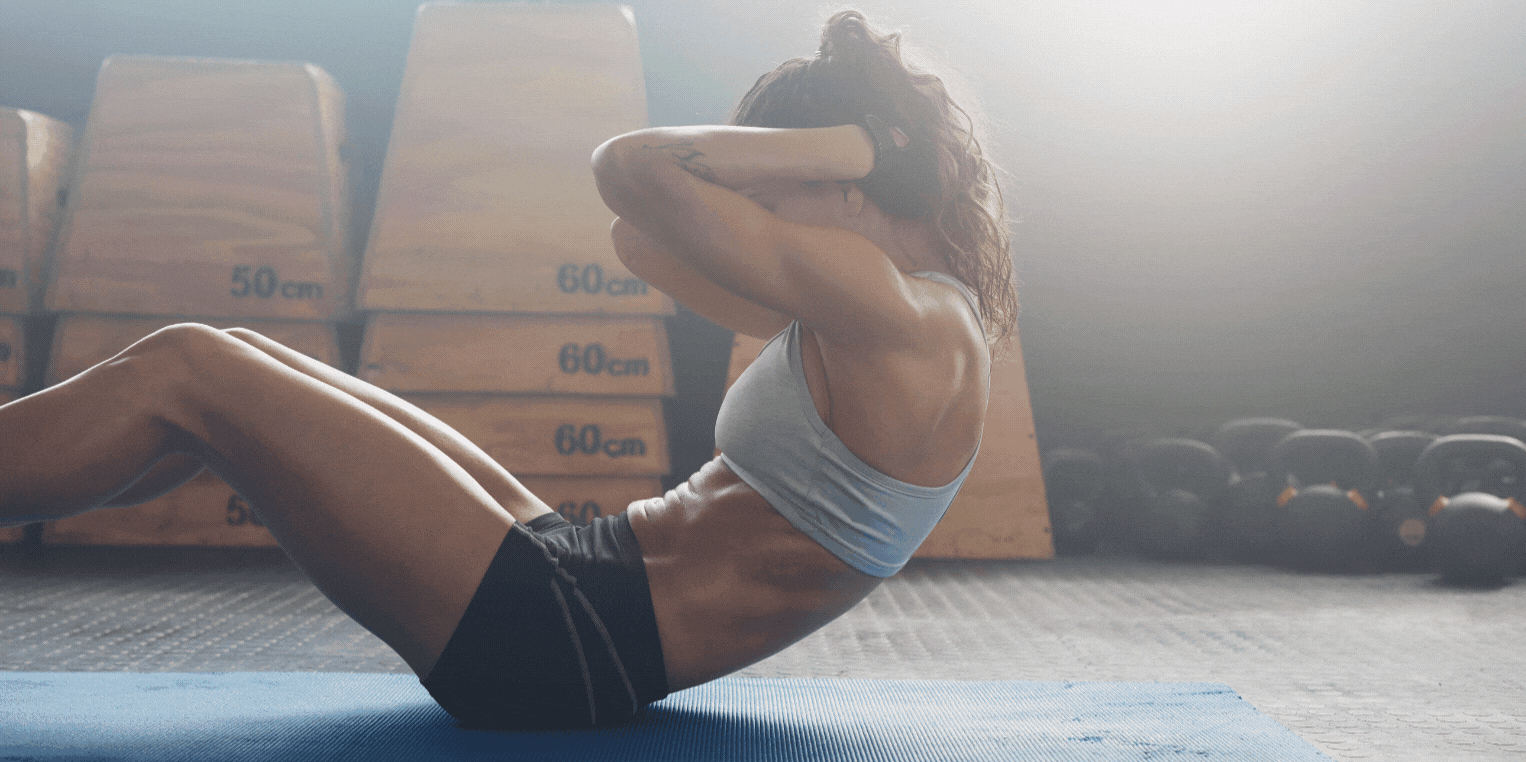
There is an unfortunate yet pervasive trend among some patients, and even practitioners, to speak of “fixing their problem,” versus “having themselves healed.” At first glance it doesn’t seem to be that important of a distinction; “fix” is more objective sounding, while “heal” is a bit more abstract, or mystic in contemporary jargon. One term typically applies to the recourse taken on a refrigerator or defunct transmission, the other to a human being. This semantic difference is, in almost all cases, an often innocent and benign mistake spoken out of desperation, convenience, or simply uncertainty. On rare occasion, however, it can be a more noxious indicator of a pernicious and highly difficult condition to treat… the case of “the patient that doesn’t want to help himself.”
In classical Chinese Medicine, physicians were esteemed not only by the potency of their medicines or the success of their treatments but by their ability to determine which patients were decidedly untreatable. One such legendary doctor, named Bian Que, lived almost 2,000 years ago and has been long revered for his ability to cure many difficult illnesses, and bring many hopeless cases back from the brink of death.

However, Dr. Que is also uniquely remembered for a case that he would not attempt to cure. His patient at the time was an arrogant, and robust king. The affluent man led an indulgent, selfish lifestyle, but also harbored a “hidden” illness that only the doctor could see. The king, reveling in his apparent good health and fortune, scoffed at Dr. Que and disregarded all opportunities to change his ways and undergo relatively simple treatment interventions. Finally, and all at once, the king became gravely and irreversibly ill. It was then, at this “untreatable” state, and in fear of the king’s delirious wrath, that Bian Que fled the royal palace and ran safely off into the woods.
Although many practitioners today would love to “run off into the woods” at the first sign of a troublesome patient, professional protocol and local State Law prevent such an amusing convenience. However, this true story does illustrate the importance of the patient’s “active” and working participation in the process of becoming better, that is… being healed.
Personally, I have learned through clinic experience that there is always hope in healing even the most difficult and “untreatable” conditions if the patient is of a positive and encouraged attitude. Likewise, how impossible it is to work with the opposite type of person, who condemns himself, or herself, at the onset of treatment, preferring instead unnecessary surgical approaches or other “passive” panaceas. Perhaps the inanimate, more lifeless term “fix” is here more appropriately resigned.

In contrast to our modern medical machine, the ancient system of patient and healer was without solicitation, salesmanship, or commercial bargaining on behalf of the doctor. These ancestral patients would “actively” seek out help for themselves by traveling far off the beaten path, and overcoming much hardship, to find and commit to a distinguished healer. Therefore, it is just as important for us today that we approach our own health and wellness with the same dedication and enthusiasm as those that have come before us.
So take charge of your body, reach out in the form of hope for active “healing,” surmount impossible obstacles and grasp upward with the desire to help yourself.

As a professional in the realm of analyzing body shapes and physiology, I fall into the habit of deconstructing what is attractive to me. Who is handsome? What qualifies as pretty… anatomically? Sometimes I think about what it is about someone that I actually like to see. “I like the way your foot springs off the ground when you’re happy. I like the way you hold your head to the side when you’re excited, the way you bounce your hair when you walk with me.”
Is it possible to quantify attractiveness, to define a standard of what constitutes objective, “physical,” beauty? This type of physique could be attractive to me, that type may not be. I may like a person that is tall with short-brown hair and widely set cheekbones, because she reminds me of my grandmother. And for you, perhaps, the exact opposite may be true for the very same familial reasons. If the awesome perplexity of defining beauty wasn’t short of being a miraculous phenomenon, then it would certainly default into the realm of confusion.
Putting Freudian idiosyncrasies aside, it is typically said that we as a human race are generally attracted to that which is unique among a species, and not that which is repetitive or common. “Opposites attract” … so it is said. And there are a multitude of other ponderous quotations on beauty that are peppered from the modern age to antiquity. Think for a second, and more than a few will immediately come to mind. “Beauty is only skin deep,” “Beauty is in the eye of the beholder,” even “Beauty and the Beast,” and my personal favorite by Fyodor Dostoyevsky, “Beauty will save the world!” I can assure you that this existential giant of Russian literature was not commenting on the vanity of Italian stilettos or “poke-you-in-the-eyebrow” mascara.

I had a patient once, a professional female dancer, who defined for me at least five distinct, physical and aesthetic benefits that come from wearing shoes with very high heels. The first, most obvious, was improvement in height. The second was shrinking of the appearance of the size of the foot, making it look petite. The third was smoothing the contour of the leg at the sharp angle of the heel. The fourth was pointing of the toes to strengthen up the arch. The fifth was amplifying the tone of the muscles in the backside, and also the buttocks and the calves. Actually there were at least three more legitimate reasons how these artificial “hooves” served to replicate the walking grace of a horse– but I won’t beleaguer you further on society’s penchant for animals and fashion.
But it is true, there are dull peacocks and brown robins and then there are brightly colored ones. That’s just the way the juxtaposition of life works and the expression of genetic code. Believe it or not, there’s even a “golden rule” of aesthetic balance found within the sterile vault of Mathematics; it is called the Fibonacci Code. Interesting to note, by which, based upon the sarcophagus of Cleopatra’s face, she was apparently considered “perfect.” If you are bored, look up The Marquardt Mask. It is fascinating… but is it beautiful?

Sociologists have attempted to distill the myriad of definitions on physical attractiveness down to a rudimentary four: symmetry, harmony, clarity, and homogamy. If you need to pull out a dictionary to understand the last term, you are not alone. It basically means we are attracted to qualities that remind us of ourselves, and therefore essentially goes against everything I have just previously established about “opposites being able to attract.” Confusion, as I mentioned from the beginning, was a disclaimer about beauty that will unfortunately hold true.
There is symmetry in snowflakes and microscopic grains of salt, but ideals of beauty are not so simple in people. What about pretty or handsome viewed through the “eyes” of those who have not been clouded by unrealistic opinions or societal trends toward perfection? Is it even possible to see physical attractiveness transcended, unadulterated by the subconscious bowels of an opinionated, fully developed adult mind? In essence, “what makes a baby smile?”
I remember reading a scientific study, for whatever that’s worth quoting at this point, that nonetheless determined one’s physical attractiveness can be improved by at least 50% when somebody genuinely effectuates a smile. Science and “effectuating” are just overly complicated ways of stating the obvious… smiling makes us happy. And people ultimately are “attracted” to other people who make them feel good about themselves, who make them smile. The complication here lies only within the elegance of its simplicity.

Isn’t it tragically too easy to fixate within ourselves, to amplify our imperfections in our minds and then infect them into our behavior like the common cold. Everyone knows it can be a sad, tragic, and lonely world, so don’t deprive people of the joy of feeling more attractive about themselves when they are around you. They are not looking at the flaws you consume daily in the mirror, they’re experiencing all of “you” at once… the holistic picture.
Does anyone really fixate on the “prettiness” of the dancer, instead of the way he or she moves within the dance. The face here is concerned with the power of emotion, not with symmetry of the hair line or smooth angle of the jaw. In fact, I would say an almost mesmerizing, or hypnotic effect, is produced by the way we move and behave that transcends our imperfect appearance— a “symmetry” that harmonizes the body with the soul.
So stand up straight and engage the world, walk the way you’d want to dance, and above all inspire others with your beautiful smile.

The principles of breathwork, or guided breathing, can be applied to any exercise or activity by consciously controlling the flow of air entering and exiting the body. In addition to the transformative effects that breath control can impart upon any specific training routine, it can also be taught as an isolated exercise with both meditative and restorative benefits.
I have outlined three specific types of breathing exercises, which I’ve learned and practiced over the past 10 years through my experience in the Russian Martial Arts. The physical mechanics of these exercises can appear quite simple, but the mental and emotional depth found within them can be as sophisticated as the participant permits. Remember, breathing is natural and fluid, and even when controlled it should not seem forced or irregular.
If you seem to lose your focus within the exercise and your breath becomes unnatural, you should stop immediately. Take a deep breath in through your nose and blow out quickly through pursed lips. Restore yourself, as often as required, and then continue as you feel able.Ex. #1 – WAVE BREATHING – Stress Reduction

1 – Lie in a relaxed, supported position, preferably on the ground, and close your eyes
2 – Breathe IN gently through your nose, and out through your mouth (equal volumes)
3 – Gently contract the muscles of your feet with no more than 50% tension as you inhale, guiding the air into the lower body and relaxing everything else above the ankles
4 – Slowly relax the muscles of your feet as breathe OUT, returning your body to its baseline state
5 – On the next inhale, contract your feet again and then bring your breath and muscle contractions higher up the body to the knees, still making sure not to tense even 1% above these areas (especially in the face)
6 – Exhale and release the knees, and then follow with relaxing the feet completely
7 – You can sequentially move the breath up and down the body, as if you were lying on the beach and the tide was rising and receding beneath you
8 – Bring the breath flow and muscle contractions to a level no higher than your neck, always making sure to keep your face soft, pleasant-looking, and free from anxiety or tension
This is a fantastic exercise to be done at night after a long, stressful day of work or training. The key to your success with this lies in your ability to “specifically” isolate just the areas you are targeting with your breath, and completely relaxing everything else. There is a serene, almost meditative quality to this exercise that makes it appropriate for any person and condition.
Ex. #2 – STRETCHING YOUR BREATH – Walking Endurance

1 – Walk, strut, or stroll at a comfortable and even pace (eg. around the park)
2 – Breathe IN over 2 steps (ie. halfway at each step), then
3 – Breathe OUT over the next 2 steps (ie. 4 steps equals one breath cycle)
4 – When you are ready, progress your breath in over 3 steps (ie. one-third at each step), “stretching” it across a full, and even inhalation
5 – Breathe out over the next 3 steps (ie. 6 steps equals one breath cycle
6 – Eventually progress your inhale/exhale repetitions in a sequential manner to a target number that feels challenging, but not distressing
7 – When finished, restore yourself with deep, pursed breathing until you feel relaxed
This is a very challenging variation of breath training, because the purpose of the exercise is to gradually bring yourself to a self-imposed limit, which is inherently uncomfortable. The key to reaping benefit with this method of training is by making sure the volume of air breathed in and out is at even, smooth increments. The movement of air flow is not staccato, or step-like as if on a graph, but fluid, and sinusoidal. Do not make yourself distressed or panicked! The goal is to improve your lung capacity and regulate your sympathetic nervous system. Always restore yourself with recovery breathing until you feel relaxed and able to breathe in a normal manner again. You should feel tired, but also refreshed, and not exhausted.
Following an type of rigorous activity, your breathing may be rapid, and seem difficult to control. Use the next exercise to help yourself recover more calmly and efficiently.
Ex. #3 – PYRAMID BREATHING – Recovery

1 – Stretch your breath IN over a count of 2 seconds (ascending the pyramid)
2 – Stretch your breath OUT over a count of 2 seconds (descending the pyramid)
3 – Don’t breathe for a count of 2 seconds (base of the pyramid)
4 – Progress the count to 3 seconds as you see fit, until you feel restored
It is important to note that the concept of the “breath hold” is anathematized in Western Medicine, primarily because of potentially dangerous blood pressure fluctuations when practiced improperly. There are Eastern disciplines that can take breath holding to extremes, such that they only be undertaken with careful guidance and medical supervision. The restorative exercise of pyramidal breathing is not a “breath hold” exercise, and should by no means create tension, anxiety, or any blood pressure consequence. If, however, you have any personal concerns because of your medical history, you should definitely discuss them with your doctor first.
Much of what has been outlined here is by no means my singular invention, or the copyright of one particular person or school of thought. Rather it is a small, generalized, yet helpful introduction to the seemingly infinite world of breathing exercises found spotted across ancient cultures from around the globe. If you would like a further exploration of breathwork, you can investigate the Indian discipline of yoga, the Chinese tai chi, and the Russian martial art of systema. An excellent book titled, LET EVERY BREATH, by Vladimir Vasiliev, has been the foundation for my introduction to breath training, and may prove a good place for you to start too!

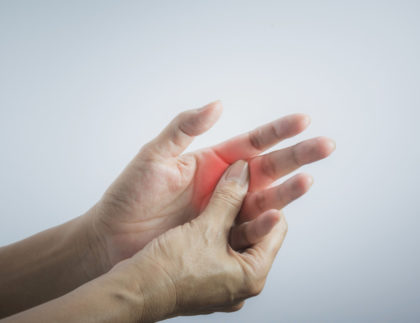
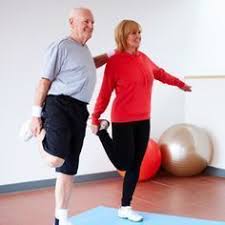
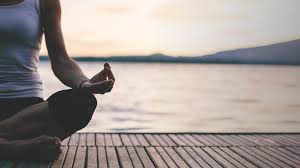
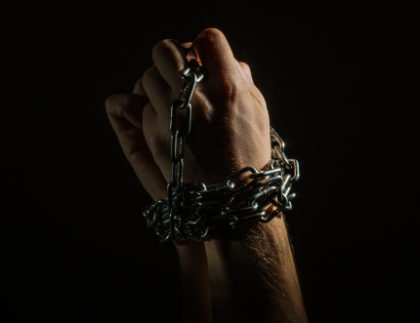
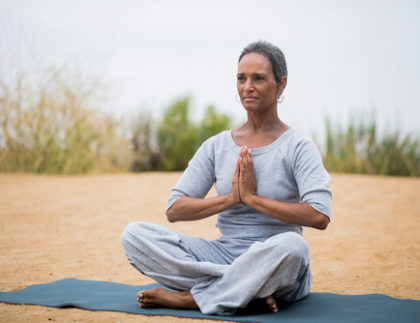

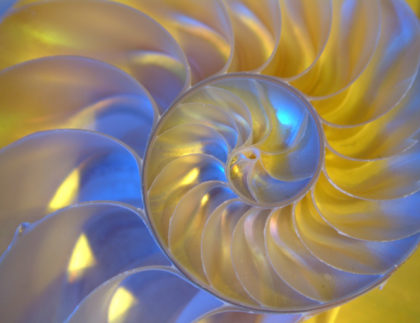

You must be logged in to post a comment.